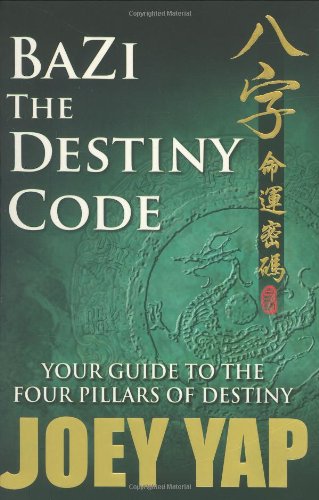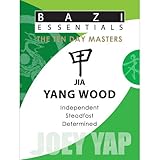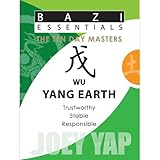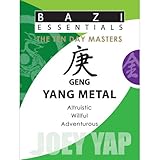Types of Luo Pan (Feng Shui Compass)

There are basicly three types of Luo Pan (Feng Shui Compass) that's most widely used:
San He (三合罗盘)
The San He luopan was said to have been used in the Tang dynasty. It contains three basic 24-direction rings (3 distinctive rings of the 24 Mountains) Each ring relates to a different method and formula. The San Hup Luo Pan is also commonly known as the Yang Kung Pan.
The name “San He” refers to the harmonious coming together of the “San Cai” or the “Three Gifts” of Heaven, Earth and Human, symbolised by the Heaven Plate, the Earth Plate and the Human Plate of the Twenty-four Mountains rings in a San He Luopan.
San Yuan (三元罗盘)
The San Yuan luopan, also known as the jiang pan (after Jiang Da Hong) or the Yi Pan (because of the presence of I Ching trigrams) incorporates many formulas used in San Yuan (Three Cycles). It contains one 24-direction ring, known as the Earth Plate Correct Needle, the ring for the 64 trigrams, and others. (The techniques grouped under the name "Flying Stars" are an example of San Yuan methods.) Can be easily distinguished with the presence of the 64 Hexagrams of the I-Ching.
Zong He (综合罗盘)
This luopan combines rings from the San He and San Yuan. It contains three 24-direction rings and the 64 trigrams ring.
Ring Description:
0 Heaven pool
1 Registration mark
2 Trigrams (Early heaven Ba Gua)
3 Luo Shu (late heaven bagua)
4 24 mountains
5 Menace and persecution ring
6 Correct needle 24 mountain San Yuan earth plate
7 Auspicious direction in 9 periods
8 San Yuan water method / dragon gates 8 boundaries
9 Houng Fun wu xing, or big wu xing.
10 Pre heaven Luo Shu and qua of square chart
11 64 Gua name and positions
12 Pre heaven 64 Gua and Luo Shu of round chart
13 Hexagram names
14 The 64 hexagrams 9 fate star
15 The 64 hexagrams with 60 Jia Zi for choosing day
16 Pre heaven 64 Gua round charts` Luo Shu
17 The father mother and three Yuan hexagrams
18 The directional hexagrams
19 The running of 384 hexagram lines
20 The sun arrive to mountain and face
21 24 seasons
22 Qi Men Dun Jia
23 The degrees of the Lunar Mansions
24 The auspicious or inauspicious positions
25 The 28 Lunar Mansions
26 360 degrees
The first ring after the Heavenly Pool, namely the Eight Evil Spirits of the Underworld and the 3 Twenty-four Mountain rings which are unique to the layout of the San He Luopan.
The Eight Evil Spirits of the Underworld, or “Ba Sha Huang Quan”:
the purpose of Feng Shui is to locate the best environment for the construction of a residence or a gravesite. We seek the “Dragon” (the “Long”), the “Sand” (the “Sha”), the “Lair” (the “Xue”), the “Water” (the “Shui”) and the orientation (the “Xiang”) in the environment we wish to build.
The Ba Sha Huang Quan ring deals with the direction of the watercourse coming towards the site. It calculates the various inauspicious directions of water-course to be avoided.
Similar to the Bague, it is divided into eight sectors, with the character Wu in the Qian position on the Later Heaven Bagua configuration. Chen (Xu) in the Kan position, Yin in the Gen position, Shen in the Zhen position, You in the Xun position, Hai in the Li position, Mao in the Kun position and Si in the Dui position.
Example. Wu in the Qian position means that if your site is a Qian Dragon (that is, if the property is sitting on the Qian direction), then it is inauspicious to have the water coming from the Wu direction.
Go on reading the rest of the 8 “Houses”:
Qian Dragon should avoid water coming from Wu direction.
Kan Dragon should avoid water coming from Chen and Xu directions.
Gen Dragon should avoid water coming from Yin direction.
Zhen Dragon should avoid water coming from Shen direction.
Xun Dragon should avoid water coming from You direction.
Li Dragon should avoid water coming from Hai direction.
Kun Dragon should avoid water coming from Mao direction.
Dui Dragon should avoid water coming from Si direction.
The Twenty-four Mountains
The Luopan combines eight Heavenly Stems and twelve Earthly Branches to form the Twenty-four Directions.
San He Luopans have the three basic plates – the ”Human Plate”, “Earth Plate” and “Heaven Plate” of 24 directions to form the “Central Needle”, “Correct Needle”, and “Seam Needle”.
First basic ring uses the earth’s magnetic north as point of reference to calibrate the 24 directions. It is called the “Earth Plate”. The needle points towards the magnetic north, called the “Correct Needle”. Using this to measure the property's orientation, surrounding form and topography (or “Xing-shi”).
Second basic ring (also made up of 24 directions) called the “Human Plate”. It reflects the magnetic deviation from true north, which is calculated to be 7.50 West of magnetic North. Known as the “Central Needle”. Used to locate the direction and judge the quality of the small hills (called “Sand” or “Sha”) in front of the Feng Shui Spot (Xue) using the Five Elements.
Third basic ring (also made up of 24 directions) called the “Heaven Plate”. It reflects the magnetic deviation from true north, which is calculated to be 7.50 East of magnetic North. Known as the “Seam Needle”. Used to locate the direction of a water-course, where it is travelling from or flowing to.
To do a Feng Shui reading, you need to obtain the “Xue-wei” spot first. The Xue-wei is the Tian-xin or the “Heavenly Heart”; that is, the centre. From the centre, we lay out the line of a cross pointing at the four cardinal directions. Since the cross shape is the same as the character for ten in Chinese, the setting out of the reference line is called “Shi-dao” or the “way of ten”. The centre and the cross must be accurately measured and obtained, otherwise your reading will not be accurate.
The direction from where the water is coming towards the front of the “Xue” is called “Tian Men” (Heavenly Door) or ”Tian Quan” (Heavenly Pass).
The direction from where the water flows away from the front of the “Xue” is called "Xia-quan" or Lower Pass. Water flowing away should be meandering and overlapping.
Within the Azure Dragon and the White Tiger, the water in front of the “Xue” is called “Yuan-chen-shui” or “Source Water”. It should be locked in to assemble the Qi. With all the Luopan rings, the most important is the Twenty-four Mountains and the Bagua.
Using the Twenty-four Mountains, When the correct orientation is obtained, one can deduce the Yin and Yang Dragons, clarify the directions of “Sheng” (birth), “Wang” (prosperity) and “Mu” (tomb or death) to explain the enhancing and controlling cycle of the Wuxing (Five Elements).

 Types of Luo Pan
Types of Luo PanShare on Facebook


















